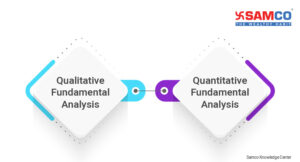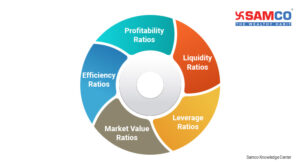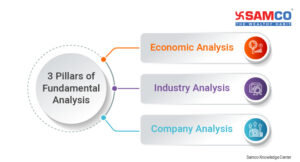- Your mother deciding whether to buy ripe tomatoes or raw tomatoes.
- You deciding between IPhone 12 Pro Max and Samsung S21 Ultra.
- You deciding whether to eat a fruit or have panipuri.
What is Fundamental Analysis?
Fundamental analysis is a systematic approach used to find a stock’s intrinsic value. It is done using qualitative and quantitative factors.- Qualitative factors are quality of management, corporate governance etc.
- Quantitative factors include studying company’s profits, losses, cash flows etc.
Fundamental Analysis & Intrinsic Value
The aim of fundamental analysis is to find a stock’s intrinsic value. But why is intrinsic value important? What does it tell you? Let us understand this with an example. You want to buy a shirt. The shop keeper tells you its cost is Rs 1,000. You look at the shirts material, stitch, color, pattern etc. You decide that it cannot be worth more than Rs 700. This Rs 700 is its ‘intrinsic value’. Intrinsic value of a company is simply its total assets minus total liabilities. Let us apply the same concept to shares. The share price of Tata Consultancy Services Ltd (TCS) is Rs 3,100. You believe the stock will do well in the future. But feel the current prices are a bit ‘over’ valued. So, you wait for a fall to buy TCS at a discount. The share price of TCS falls to Rs 2,800 after 1 month. You go ahead and buy the shares. You think you got a discount of Rs 300. But what if I told you that the ‘intrinsic value’ of TCS is Rs 2,500. Now, you have paid Rs 300 more for the stock! It is important to known a stock’s intrinsic value to avoid such situations. It will help you decide whether you are buying shares at a discount or paying extra.- If Intrinsic Value is higher than stock price, the stock is undervalued.
- If Intrinsic Value is lower than stock price, the stock is overvalued.
- In this case, TCS is undervalued. So, you will buy TCS Ltd at Rs 2,000 as you expect it to revert to its intrinsic value (Rs 2,500).
- If TCS was trading at Rs 3,100 then you will sell it as it will revert to its intrinsic value (Rs 2,500).
Types of Fundamental Analysis
Fundamental analysis is not limited to only studying a company’s balance sheet. There are two types of fundamental analysis – Let us first understand qualitative fundamental analysis. What do you see in the below picture? A skull or a little girl playing in a garden?
Let us first understand qualitative fundamental analysis. What do you see in the below picture? A skull or a little girl playing in a garden?
 The answer is both! Some might see a skull and others might see the girl. The picture remains the same but opinions change. Qualitative analysis is like this picture. It is subjective.
Qualitative Fundamental Analysis includes studying a company’s:
The answer is both! Some might see a skull and others might see the girl. The picture remains the same but opinions change. Qualitative analysis is like this picture. It is subjective.
Qualitative Fundamental Analysis includes studying a company’s:
- Quality of management
- Corporate governance
- Some investors might think a business is better off being managed by its promoters and owners as they have built it from the ground up and understand everything about the business.
- Other investors might believe the business is better off being managed by experts in respective fields. This will help the company take tough decisions and always be on top of the game.
- Balance Sheet
- Cash flow statements
- Profit and Loss (P&L) statements.

How Does Fundamental Analysis Work?
There are two approaches to fundamental analysis –- Top Down
- Bottom Up
- You shortlist categories – Perfume, Clothes or Bags.
- You decide to gift her a perfume.
- You research on the best perfumes in the market based on smell and price.
- You finally decide to gift her a Dior perfume.
- Economy Analysis
- Industry Analysis
- Company Analysis
Three Pillars of Fundamental Analysis
 Every company functions in an environment which shapes its future. This environment influences the stock’s intrinsic value. Hence, economic analysis is an important part of fundamental analysis.
Every company functions in an environment which shapes its future. This environment influences the stock’s intrinsic value. Hence, economic analysis is an important part of fundamental analysis.
Economic Analysis is a study of the following factors.
1. Gross Domestic Product (GDP): GDP is the total value of goods and services produced in an economy. In a growing economy, GDP is high and companies post higher profits. Whereas during recessions, profits fall leading to unemployment, lower spending etc. A steadily growing GDP is good for business. 2. Inflation: High inflation reduces investor’s purchasing power. This reduces the overall demand in an economy. Low demand means less revenue. When companies earn less it directly affects investor sentiments. This is evident in lower stock prices. Inflation is equally disruptive for companies as well. When inflation rises, cost of raw materials increases. Companies cannot keep on raising their prices as it will affect demand. High cost of production reduces profit margins. This again affects stock prices. 3. Interest rates: When interest rates are high, businesses are forced to borrow money at high rates. This increases the cost of capital reducing company’s profitability. When companies post less profits, its share prices are directly impacted. When interest rates are low, businesses borrow money cheaply and cost of capital reduces. This drives demand and increases company’s profits. Investors are eager to invest in companies with high profitability. This increases its share prices. 4. Economic & Political Stability: A stable political environment is important for businesses. Companies can work in the long term only when there is stable political climate in the country. For example: Investors prefer investing in companies based in USA, UK than politically unstable countries like Syria or Iran.Industry Analysis
Companies belong to an industry. Infosys, Tata Consultancy Services (TCS) belong to ‘Information Technology’ industry. So which industry should you invest in? How should you analyse a particular industry? Here are factors that Investors should consider while analyzing an industry. 1. Demand Supply Gap: The demand for any product grows at a steady rate. But its production increases with time. At a particular point, there is an oversupply.- Oversupply reduces a product’s demand which decreases a company’s overall profitability.
- High demand and low supply increases the price of the product. This leads to higher profitability for the business and investors.
Company Analysis
The final pillar of EIC is ‘Company Analysis’.- Economic analysis shows the growth prospects of the entire economy.
- Industry analysis shows which industry is more profitable.
- Company analysis shows which company is most attractive.
Difference between Technical and Fundamental Analysis
Fundamental and technical analysis provide answers to two very different questions.- Fundamental analysis tells you ‘what’ to buy.
- Technical analysis tells you ‘when’ to buy.
How to Perform Fundamental Analysis?
Fundamental analysis is not just for analysts with fancy degrees. Everyone with basic understanding of finance can practice fundamental analysis. You will need the following tools for fundamental analysis –- Company’s annual reports. This is freely available on company’s website.
- Access to competitors and overall industry data.
- Access to news of your shortlisted companies and industries.



 Easy & quick
Easy & quick
Leave A Comment?